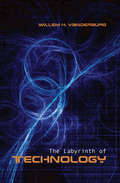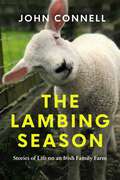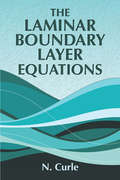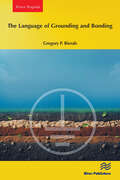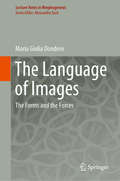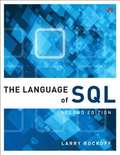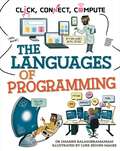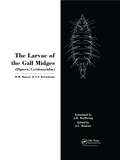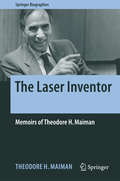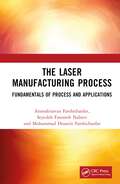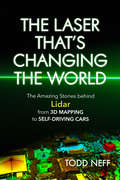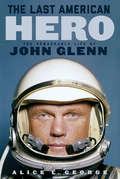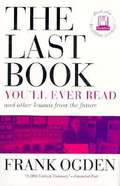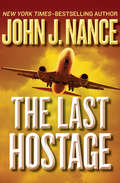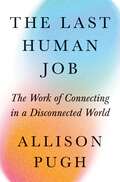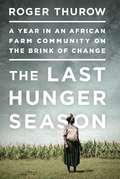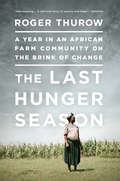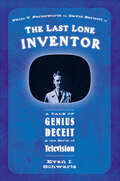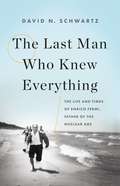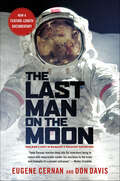- Table View
- List View
The Labyrinth of Technology
by Willem H. VanderburgWhy does modern technology succeed so brilliantly in some respects and simultaneously fail in others? While he was completing a doctoral thesis in mechanical engineering in the late 60s and early 70s, Willem Vanderburg became convinced that the environmental crisis and the possible limits to growth would require a fundamental change in the engineering, management and regulation of technology.In this volume he exposes the limitations of conventional approaches in these fields. Modern societies urgently need to rethink the intellectual division of labour in science and technology and the corresponding organization of the university, corporation, and government in order to get out of a self-destructive pattern where problems are first created by some than then dealt with by others, making it almost impossible to get to the roots of anything. The result is what he calls the labyrinth of technology, a growing patchwork of compensations that merely displace and transform problems from one place to another. The author's diagnosis suggests the remedy: a new, preventive strategy that situates technological and economic growth in its human, societal, and biospheric contexts, and calls for a synthesis of methods in engineering, management, and public policy, and of approaches in the social sciences and humanities. He also suggests that this same synthesis can be applied in medicine, law, social work, and other professions.The Labyrinth of Technology is a unique and invaluable text for students, academics and laypersons in all disciplines, and speaks to those who are torn between the benefits that modern technology provides and the difficulties it creates in our individual and collective lives.
The Lambing Season: Stories of Life on an Irish Family Farm
by John ConnellA hymn to the rituals of farming life from the bestselling Irish author of The Farmer's Son.For John Connell, the lambing season on his County Longford farm begins in the autumn. In the sheep shed, he surveys the dozen females in his care and contemplates the work ahead as the season slowly turns to winter, then spring. The twelve sheep have come into his life at just the right moment. After years of hard work, John felt a deep tiredness creeping up on him, a sadness that he couldn't shrug off. Having always sought spiritual guidance, he comes to realise that, in addition to the soothing words of literature and philosophy, perhaps the way ahead involves this simple flock of sheep. In the hard work of livestock rearing, in the long nights in the shed helping the sheep to lamb, he can reflect on what life truly means. Like the flock that he shepherds, this book is both simple and profound, a meditation on the rituals of farming life and a primer on the lessons that nature can teach us. As spring returns and the sheep and their lambs are released into the fields, skipping with joy, John recalls the words of Henry David Thoreau, reminding us to "live in each season as it passes."
The Laminar Boundary Layer Equations (Dover Books on Physics)
by N. CurleA thorough introduction to the study of boundary layer problems in physics and fluid mechanics, this treatment assumes some knowledge of classical inviscid fluid dynamics. The ordered and logical presentation is accessible to undergraduates, and professionals will benefit from the careful expositions of the limitations and accuracy of various methods.An extensive introduction explains the boundary-layer concept and demonstrates its simplification of equations of viscous flow. Successive chapters address various aspects of solution in incompressible flow, starting with analytic solutions of the velocity field and advancing to discussions of high-accuracy numerical solutions, practical methods of calculation, and an analysis of factors that might govern the choice of a method. Several chapters on the compressible laminar boundary layer include examinations of pressure gradient and heat transfer, followed by a brief exploration of some aspects of the problem of the interaction between shock waves and laminar boundary layers. Complete references and a helpful Index conclude the text.
The Landlord: A totally gripping psychological thriller that will have you on the edge of your seat
by R.B. EganHe's invited you in, but will you ever leave?After Cathy's boyfriend surprisingly ends things she is distraught. She also needs to move out of their flat and find a new place to live.When a friend tips her off about a room to rent it seems like her luck has suddenly changed.The house is on one of the city's most sought-after streets and the live-in landlord, whose son has just left home, is charming and kind. Best of all, it's affordable.Cathy's invited to make herself at home. But there is one rule: she can never go into the garden. Everything else seems so perfect she doesn't think twice.But she'll soon realise the deal she has made is too good to be true... and now it's far too late...
The Landlord: A totally gripping psychological thriller that will have you on the edge of your seat
by R.B. Egan'This story has it all gripping twisty and addictive... It's so good' Reader review ⭐⭐⭐⭐⭐He's invited you in, but will you ever leave?After Cathy's boyfriend surprisingly ends things she is distraught. She also needs to move out of their flat and find a new place to live.When a friend tips her off about a room to rent it seems like her luck has suddenly changed.The house is on one of the city's most sought-after streets and the live-in landlord, whose son has just left home, is charming and kind. Best of all, it's affordable.Cathy's invited to make herself at home. But there is one rule: she can never go into the garden. Everything else seems so perfect she doesn't think twice.But she'll soon realise the deal she has made is too good to be true... and now it's far too late...A totally gripping and edge-of-your-seat thriller that will keep you up late into the night. Perfect for fans of The Housemaid, Lisa Jewell and T.M. Logan.Everyone is gripped by The Landlord:'I tore through this ripper of a book at breakneck pace... A story that never lets up. With characters that leap from the page and a cracking pace... Will keep you frantically turning the pages to the electrifying end!' Gill Perdue'A missing woman and a house of secrets: with tons of twists... Will keep you turning the pages'Catherine Kirwan'You are questioning the characters, the plot and yourself... This book kept me going right until the end' Reader review ⭐⭐⭐⭐⭐'Plenty of twists and turns and enough suspense and intrigue to make you think twice about your landlord if you rent a home' Reader review ⭐⭐⭐⭐⭐'Addictive "without walls" locked room mystery that will have you guessing, re-guessing then guessing again... Brilliant stuff!' Graham BartlettReaders love R.B. Egan:'OMIGOSH! SO riveting, action-packed, THRILLING and exciting!... So many TWISTS and turns!' Reader review ⭐⭐⭐⭐⭐'This thriller is like jumping into a moving car and going full speed!... It's impossible to guess who was behind everything until the reveal, and then my jaw dropped! Whatever I expected, I didn't expect that! The twist took me totally unprepared!' Reader review ⭐⭐⭐⭐⭐'Gripping and heart-pounding action thriller with a jaw-dropping twist!' Reader review ⭐⭐⭐⭐⭐'An absolutely thrilling ride. An edge of the seat book' Reader review ⭐⭐⭐⭐⭐
The Language of Grounding and Bonding (River Publishers Rapids Series in Electronic Materials, Circuits and Devices)
by Gregory P. BieralsThis book identifies and analyzes the important terms that apply to grounding and bonding electrical systems and equipment. These terms have many real-world applications in the design and installation of electrical systems, and the grounding and bonding of these systems are the heart of every electrical installation. In our analysis, we use real world applications with practical examples to further enhance the reader’s understanding of this complex subject. This includes detailed examples of fault-current calculations.At the end, there is a 30-question examination, complete with an answer key, to solidify understanding of NEC requirements for safe, compliant installations.
The Language of Images: The Forms and the Forces (Lecture Notes in Morphogenesis)
by Maria Giulia DonderoThis book deals with two fundamental issues in the semiotics of the image. The first is the relationship between image and observer: how does one look at an image? To answer this question, this book sets out to transpose the theory of enunciation formulated in linguistics over to the visual field. It also aims to clarify the gains made in contemporary visual semiotics relative to the semiology of Roland Barthes and Emile Benveniste. The second issue addressed is the relation between the forces, forms and materiality of the images. How do different physical mediums (pictorial, photographic and digital) influence visual forms? How does materiality affect the generativity of forms? On the forces within the images, the book addresses the philosophical thought of Gilles Deleuze and René Thom as well as the experiment of Aby Warburg’s Atlas Mnemosyne. The theories discussed in the book are tested on a variety of corpora for analysis, including both paintings and photographs, taken from traditional as well as contemporary sources in a variety of social sectors (arts and sciences). Finally, semiotic methodology is contrasted with the computational analysis of large collections of images (Big Data), such as the “Media Visualization” analyses proposed by Lev Manovich and Cultural Analytics in the field of Computer Science to evaluate the impact of automatic analysis of visual forms on Digital Art History and more generally on the image sciences.
The Language of SQL (2nd Edition)
by Larry RockoffThe Language of SQL, Second Edition Many SQL texts attempt to serve as an encyclopedic reference on SQL syntax -- an approach that is often counterproductive, because that information is readily available in online references published by the major database vendors. For SQL beginners, it's more important for a book to focus on general concepts and to offer clear explanations and examples of what various SQL statements can accomplish. This is that book. A number of features make The Language of SQL unique among introductory SQL books. First, you will not be required to download software or sit with a computer as you read the text. The intent of this book is to provide examples of SQL usage that can be understood simply by reading. Second, topics are organized in an intuitive and logical sequence. SQL keywords are introduced one at a time, allowing you to grow your understanding as you encounter new terms and concepts. Finally, this book covers the syntax of three widely used databases: Microsoft SQL Server, MySQL, and Oracle. Special "Database Differences" sidebars clearly show you any differences in syntax among these three databases, and instructions are included on how to obtain and install free versions of the databases. This is the only book you need to gain a quick working knowledge of SQL and relational databases. Learn How To. . . Use SQL to retrieve data from relational databases Apply functions and calculations to data Group and summarize data in a variety of useful ways Use complex logic to retrieve only the data you need Update data and create new tables Design relational databases so that data retrieval is easy and intuitive Use spreadsheets to transform your data into meaningful displays Retrieve data from multiple tables via joins, subqueries, views, and set logic Create, modify, and execute stored procedures Install Microsoft SQL Server, MySQL, or Oracle Contents at a Glance 1 Relational Databases and SQL 2 Basic Data Retrieval 3 Calculated Fields and Aliases 4 Using Functions 5 Sorting Data 6 Selection Criteria 7 Boolean Logic 8 Conditional Logic 9 Summarizing Data 10 Subtotals and Crosstabs 11 Inner Joins 12 Outer Joins 13 Self Joins and Views 14 Subqueries 15 Set Logic 16 Stored Procedures and Parameters 17 Modifying Data 18 Maintaining Tables 19 Principles of Database Design 20 Strategies for Displaying Data A Getting Started with Microsoft SQL Server B Getting Started with MySQL C Getting Started with Oracle
The Languages of Programming (Click, Connect, Compute #4)
by Dharini BalasubramaniamComputer language fundamentals, using clear, expert explanations and comic illustrations to spark interest and enthusiasm in the next generation of computer scientists!The Languages of Programming looks at the definitions and uses of languages, bot natural and constructed. Readers will find out about the elements of a programming language, the best types of language to use at each stage of the software life cycle, and about the tools that help to solve difficult programming problems and complex tasks such as monitoring air traffic. And the end of the book fast-forwards to the future of computer science, languages and robotics and considers what it might mean to live in a 'smarter' world.Contents: What is a language? / Languages can come naturally ... / ... or languages can be constructed / Language types for CS / Even more languages! / It's all syntax and semantics / Ways of programming / Choose your language / Programming is a process / Tools to make our work easier / Case study: Blocks vs Python / The future of programming languages / Pioneer portraits / Further information / Glossary / Quiz yourself! / IndexThe Click, Connect, Compute series untangles the computer science web and teaches children about the essentials of computer software, hardware and digital literacy, as well as discussing the ethics surrounding this evolving field. Featuring fun, friendly comic strip illustrations, pioneer bios and a quiz, this is a perfect read for children aged 8+.Books in the series: Computer Science Essentials / Data, Big and Small / Smart Machines / The Languages of ProgrammingWritten in a clear, thoughtful way by computer science expert, Dr. Dharini Balasubramaniam, a strong advocate for ethics and education in her field.
The Larvae of the Gall Miges
by B.M. Mamaev N.P. KrivosheinaThe characteristics of all main groups of soil-bound insects are given in this book.
The Laser Inventor
by Theodore H. MaimanIn these engaging memoirs of a maverick, Theodore H. Maiman describes the life events leading to his invention of the laser in 1960. Maiman succeeded using his expertise in physics and engineering along with an ingenious and elegant design not anticipated by others. His pink ruby laser produced mankind's first-ever coherent light and has provided transformational technology for commerce, industry, telecom, the Internet, medicine, and all the sciences. Maiman also chronicles the resistance from his employer and the ongoing intrigue by competing researchers in industry and academia seeking to diminish his contribution in inventing the first laser. This work will appeal to a wide readership, from physicists and engineers through science enthusiasts to general readers. The volume includes extensive photos and documentary materials related to Maiman's life and accomplishments never before published. "No one beat Maiman to the laser. How important is the laser? How important are all lasers? That is how important we have to regard Maiman's contribution. He and the laser changed all of our lives, everyone's!" Dr. Nick Holonyak, Jr. , Professor of Electrical and Computer Engineering and Physics, University of Illinois at Champaigne-Urbana, and inventor of the light-emitting diode (LED) and co-inventor of the transistor laser "More than five decades later, we can safely conclude that Theodore Maiman's groundbreaking discovery changed the world. Our modern life just as scientific research would be quite different without the laser. " Dr. Ferenc Krausz, Director, Max Planck Institute for Quantum Optics, Garching, Germany, and Professor of Physics, Ludwig Maximilian University, Munich, and pioneer in attosecond lasers and attophysics "Maiman had the stroke of genius needed to take a different approach [from his competitors]. The sheer elegance and simplicity of his design belies the intellectual achievement it represents. If his invention seems obvious to some today, it was far from obvious in 1960. " Jeff Hecht, authoritative science writer on the historical development of the laser, author of books on lasers and fiber optics
The Laser Manufacturing Process: Fundamentals of Process and Applications
by Anooshiravan Farshidianfar Seyedeh Fatemeh Nabavi Mohammad Hossein FarshidianfarThe Laser Manufacturing Process is a comprehensive guide to industrial laser processes, offering insights into their fundamentals, applications across industries, production specifics, and characteristics, including mechanical, metallurgical, and geometrical aspects, as well as potential defects.The book also investigates how industrial laser processes are developed and the diverse attributes of the resulting objects, emphasizing their significance in industrial settings. Here, “objects” refer to the tangible outcomes of laser manufacturing, encompassing a wide array of products and components created through processes like cutting, welding, and additive manufacturing. These objects exhibit distinct mechanical properties, metallurgical characteristics, and geometrical precision, all of which are crucial considerations in their utility and performance within industrial environments.This book functions as a concise reference manual catering to the needs of both students and professionals who require knowledge related to laser manufacturing processes, such as laser cutting, laser welding, and laser additive manufacturing processes.
The Laser That's Changing the World: The Amazing Stories behind Lidar, from 3D Mapping to Self-Driving Cars
by Todd NeffTells the story of a laser technology that will have a big impact on society and the brilliant innovators responsible for its developmentLidar--a technology evolved from radar, but using laser light rather than microwaves--has found an astounding range of applications, none more prominent than its crucial role in enabling self-driving cars. This accessible introduction to a fascinating and increasingly vital technology focuses on the engaging human stories of lidar's innovators as they advance and adapt it to better understand air, water, ice and Earth - not to mention mapping Mars and Mercury, spotting incoming nuclear warheads, and avoiding pedestrians and cyclists on city streets. Award-winning science writer Todd Neff invites readers behind the scenes to meet some of the great innovators who have explored and expanded the uses of this amazing technology: people like MIT scientist Louis Smullin, whose lidar bounced light off the moon soon after the laser's invention; Allan Carswell, who plumbed the shallows of Lake Erie en route to developing the aerial lidar now essential for coastal mapping and hurricane damage assessment; Red Whittaker, the field robotics pioneer who was putting lidar on his autonomous contraptions as early as the 1980s; and David Hall, whose laser sombrero on a Toyota Tundra gave birth to modern automotive lidar.These are just some of the stories Neff tells before looking ahead to a future that could bring lidar to unpiloted air taxis, to the contaminated pipes of the U.S. nuclear weapons complex, and to satellites capable of pinpointing greenhouse gas sources from orbit. As the author makes clear, the sky is no limit with lidar, which promises to make our world safer, healthier, and vastly more interesting.
The Last American Hero: The Remarkable Life of John Glenn
by Alice L. GeorgeOn February 20, 1962, John Glenn became a national star. That morning at Cape Canaveral, a small-town boy from Ohio took his place atop a rocket and soared into orbit to score a victory in the heavily contested Cold War. The television images were blurry black-and-white phantoms. The cameras shook as the rocket moved, but by the end of the day, one thing was clear: a new hero rode that rocket and became the center of the world's attention for the four hours and fifty-five minutes of his flight. He became celebrated in all corners of the world as not just the first American to orbit the Earth, but as the first space traveler to take the human race with him. From that day forward, Glenn restively wore the hero label. Wherever he went, people knew his name and what he had done. Refusing to let that dramatic day define his life, he went on to become a four-term US senator—and returned to space at the age of seventy-seven. The Last American Hero examines the many layers that formed the man and unravels the reasons for his singular role. He was a creation of the media, in some ways, but he was also a product of the Cold War. Not even Glenn himself seemed to fully understand his celebrity. He was a war hero, a two-time astronaut, a veteran senator, a devoted husband, a father, and much more. At a time when increasingly cynical Americans need heroes, his aura burns brightly in American memory.
The Last Beautiful Girl
by Nina LaurinFans of Black Mirror and There's Someone Inside Your House will devour this disturbing story about a dark descent into social media fame. Izzy is determined to use her family's new mansion, and the treasures inside, to outshine everyone in her new town, even when it's clear that something—or someone—in the house has deadly intentions...When Isabella Brixton is forced to move from New York City to a tiny town, she's not thrilled. The silver lining is the gorgeous old mansion she now calls home. As the former residence of a glamorous patron of the arts and muse who died many decades ago, the house has its quirks: whole floors are boarded up, old paintings are covered, and cell reception is nonexistent.Isa is ready to hate her new life, but things turn around when her classmate Alexa, a skilled photographer, suggests they start an Instagram account featuring portraits of Isa inside the mansion. Wearing gowns and jewelry hidden away in the house, Isa looks perfect in the unfiltered photos—almost unnaturally so—and they quickly go viral. Soon she's got a new best friend, a potential boyfriend, and is surrounded by a group of girls who want the photoshoots and fame for themselves. But there's a darkness in the house, and a darkness growing in Isa, too. When girls start getting hurt, it's clear that something—or someone—in the house is growing in power, with deadly intentions.
The Last Book You'll Ever Read and Other Lessons from the Future
by Frank Ogden"The only constant is change. Learn to love it. As the rate of change accelerates, the result will appear chaotic to the uninitiated. But there is elegant order in chaos. Few so far have learned to recognize and profit from it. This is where the future lies."<P> From his houseboat moored in Vancouver harbor — a floating electronic cottage — Frank Ogden monitors the world by computer phone link and satellite dish. His boundless curiosity, his gift for extrapolation, and his ability to synthesize information have made him one of the world's foremost futurists.<P> A consultant to corporations, professional organizations, and government agencies, he is in constant demand as a catalyst of change, stimulating his clients to think creatively about the future and their place in it.<P> Ogden has led a life of profitable nonconformity. Born in Toronto, he was educated in Canada and the United States before serving as a flight engineer in the Second World War. He has since done everything from selling airplanes to joining a team of therapists researching LSD at Hollywood Hospital. He helped establish Canada's first think-tank, was a founding member of the World Future Society in Canada, and in 1989 was elected a Fellow of the Explorers Club in New York.<P> Today Frank Ogden travels the world tirelessly, fascinated as ever by the process of change, seeking out the latest trends, and thinking about where they're leading us. How will the technological revolution affect the way we live? What will the Information Age ultimately mean for the "knows" and the "know-nots"? Is the next millennium to be feared or embraced?<P> Draw from his popular seminars and syndicated "Dr. Tomorrow" newspaper column, The Last Book You'll Ever Read is a sampling of the provocative insights and useful predictions that have made Frank Ogden, in the words of the Los Angeles Times, "possibly the world's most up-to-date futurist."
The Last Exit: A Jen Lu Mystery (A Jen Lu Mystery)
by Michael KaufmanPerfect for fans of Ben Winters and Cory Doctorow. In this thrilling near-future novel, the secret to eternal life is closely guarded by people who will do anything to protect it--even if it means destroying everything in their path. Set in Washington D.C. in the near future, climate change has hit hard, fires are burning, unemployment is high, and controversial longevity treatments are only available to the very rich. Enter resourceful young police detective, Jen B. Lu, and her 'partner', Chandler, a SIM implant in her brain and her instant link to the Internet and police records, and constant voice inside her head. He's an inquisitive tough guy, with a helluva sense of humor and his own ideas about solving crimes.As a detective in the Elder Abuse unit, Jen is supposed to be investigating kids pushing their aging parents to "exit" so they are eligible to get the longevity drug. But what really has her attention are the persistent rumors about Eden, an illegal version of the longevity drug, and the bizarre outbreak of people aging almost overnight, then suddenly dying--is this all connected? Is Big Pharma involved?When Jen's investigations of Eden take her too close to the truth, she is suspended, Chandler is deactivated, and her boyfriend is freaked out by "the thing inside her brain." This leaves Jen to pursue a very dangerous investigation all by herself.
The Last Hostage: The Last Hostage And Blackout (The Kat Bronsky Thrillers #1)
by John J. NanceAn FBI hostage negotiator confronts a commercial pilot who has hijacked his own plane in this spellbinding thriller from New York Times–bestselling author John J. Nance Airline pilot Ken Wolfe does not rattle easily. But when he learns that Rudolph Bostich is on his flight, his face goes pale. Bostich, the presumptive nominee for US Attorney General, bungled the case against the man who kidnapped and killed Wolfe&’s daughter. The pilot is prepared to do whatever it takes to get revenge—even setting off a bomb on a plane full of passengers. FBI agent, psychologist, and rookie hostage negotiator Kat Bronsky now has one hundred and thirty lives riding on her every word. As Bronsky speaks with the volatile Wolfe, she realizes she must solve the mystery of an eleven-year-old girl&’s murder—in a matter of hours—to avert disaster.
The Last Human Job: The Work of Connecting in a Disconnected World
by Allison J. PughA timely and urgent argument for preserving the work that connects us in the age of automationWith the rapid development of artificial intelligence and labor-saving technologies like self-checkouts and automated factories, the future of work has never been more uncertain, and even jobs requiring high levels of human interaction are no longer safe. The Last Human Job explores the human connections that underlie our work, arguing that what people do for each other in these settings is valuable and worth preserving.Drawing on in-depth interviews and observations with people in a broad range of professions—from physicians, teachers, and coaches to chaplains, therapists, caregivers, and hairdressers—Allison Pugh develops the concept of &“connective labor,&” a kind of work that relies on empathy, the spontaneity of human contact, and a mutual recognition of each other&’s humanity. The threats to connective labor are not only those posed by advances in AI or apps; Pugh demonstrates how profit-driven campaigns imposing industrial logic shrink the time for workers to connect, enforce new priorities of data and metrics, and introduce standardized practices that hinder our ability to truly see each other. She concludes with profiles of organizations where connective labor thrives, offering practical steps for building a social architecture that works.Vividly illustrating how connective labor enriches the lives of individuals and binds our communities together, The Last Human Job is a compelling argument for us to recognize, value, and protect humane work in an increasingly automated and disconnected world.
The Last Hunger Season
by Roger ThurowAt 4:00 am, Leonida Wanyama lit a lantern in her house made of sticks and mud. She was up long before the sun to begin her farm work, as usual. But this would be no ordinary day, this second Friday of the new year. This was the day Leonida and a group of smallholder farmers in western Kenya would begin their exodus, as she said, “from misery to Canaan,” the land of milk and honey. Africa’s smallholder farmers, most of whom are women, know misery. They toil in a time warp, living and working essentially as their forebears did a century ago. With tired seeds, meager soil nutrition, primitive storage facilities, wretched roads, and no capital or credit, they harvest less than one-quarter the yields of Western farmers. The romantic ideal of African farmers––rural villagers in touch with nature, tending bucolic fields––is in reality a horror scene of malnourished children, backbreaking manual work, and profound hopelessness. Growing food is their driving preoccupation, and still they don’t have enough to feed their families throughout the year. Thewanjala––the annual hunger season that can stretch from one month to as many as eight or nine––abides. But in January 2011, Leonida and her neighbors came together and took the enormous risk of trying to change their lives. Award-winning author and world hunger activist Roger Thurow spent a year with four of them––Leonida Wanyama, Rasoa Wasike, Francis Mamati, and Zipporah Biketi––to intimately chronicle their efforts. InThe Last Hunger Season,he illuminates the profound challenges these farmers and their families face, and follows them through the seasons to see whether, with a little bit of help from a new social enterprise organization called One Acre Fund, they might transcend lives of dire poverty and hunger. The daily dramas of the farmers’ lives unfold against the backdrop of a looming global challenge: to feed a growing population, world food production must nearly double by 2050. If these farmers succeed, so might we all.
The Last Hunger Season: A Year in an African Farm Community on the Brink of Change
by Roger ThurowAt 4:00 am, Leonida Wanyama lit a lantern in her house made of sticks and mud. She was up long before the sun to begin her farm work, as usual. But this would be no ordinary day, this second Friday of the new year. This was the day Leonida and a group of smallholder farmers in western Kenya would begin their exodus, as she said, "from misery to Canaan," the land of milk and honey.Africa's smallholder farmers, most of whom are women, know misery. They toil in a time warp, living and working essentially as their forebears did a century ago. With tired seeds, meager soil nutrition, primitive storage facilities, wretched roads, and no capital or credit, they harvest less than one-quarter the yields of Western farmers. The romantic ideal of African farmers--rural villagers in touch with nature, tending bucolic fields--is in reality a horror scene of malnourished children, backbreaking manual work, and profound hopelessness. Growing food is their driving preoccupation, and still they don't have enough to feed their families throughout the year. The wanjala--the annual hunger season that can stretch from one month to as many as eight or nine--abides.But in January 2011, Leonida and her neighbors came together and took the enormous risk of trying to change their lives. Award-winning author and world hunger activist Roger Thurow spent a year with four of them--Leonida Wanyama, Rasoa Wasike, Francis Mamati, and Zipporah Biketi--to intimately chronicle their efforts. In The Last Hunger Season, he illuminates the profound challenges these farmers and their families face, and follows them through the seasons to see whether, with a little bit of help from a new social enterprise organization called One Acre Fund, they might transcend lives of dire poverty and hunger.The daily dramas of the farmers' lives unfold against the backdrop of a looming global challenge: to feed a growing population, world food production must nearly double by 2050. If these farmers succeed, so might we all.
The Last Lone Inventor: A Tale of Genius, Deceit, and the Birth of Television
by Evan I. Schwartz“…Fascinating… A riveting American classic of independent brilliance versus corporate arrogance. I found it more fun than fiction.” — James Bradley, author of Flags of Our Fathers“… The fascinating inside story of how this eccentric loner invented television and fought corporate America.” — Walter Isaacson, chariman, CNN“…Compelling…Strong, dramatic prose…” — Kirkus Reviews“…A lively and engaging account.” — Library Journal“[A] gripping and eminently readable saga of the birth of television and the death of the Edisonian myth.” — Darwin magazine
The Last Man Who Knew Everything: The Life and Times of Enrico Fermi, Father of the Nuclear Age
by David N. SchwartzThe definitive biography of the brilliant, charismatic, and very human physicist and innovator Enrico FermiIn 1942, a team at the University of Chicago achieved what no one had before: a nuclear chain reaction. At the forefront of this breakthrough stood Enrico Fermi. Straddling the ages of classical physics and quantum mechanics, equally at ease with theory and experiment, Fermi truly was the last man who knew everything--at least about physics. But he was also a complex figure who was a part of both the Italian Fascist Party and the Manhattan Project, and a less-than-ideal father and husband who nevertheless remained one of history's greatest mentors. Based on new archival material and exclusive interviews, The Last Man Who Knew Everything lays bare the enigmatic life of a colossus of twentieth century physics.
The Last Man on the Moon: One Man's Part in Mankind's Greatest Adventure
by Don Davis Eugene CernanFrom the Apollo 17 commander and NASA veteran, “an exciting, insider’s take on what it was like to become one of the first humans in space” (Publishers Weekly).Eugene Cernan was a unique American who came of age as an astronaut during the most exciting and dangerous decade of space flight. His career spanned the entire Gemini and Apollo programs, from being the first person to spacewalk all the way around our world to the moment when he left man’s last footprint on the moon as commander of Apollo 17.Between those two historic events lay more adventures than an ordinary person could imagine as Cernan repeatedly put his life, his family, and everything he held dear on the altar of an obsessive desire. Written with New York Times–bestselling author Don Davis, The Last Man on the Moon is the astronaut story never before told—about the fear, love, and sacrifice demanded of the few who dare to reach beyond the heavens.“Thrilling highlights . . . a book not just about space flight but also about the often-brutal competition that went on between the US and the Soviet Union.” —Washington Times“A fascinating book.” —Charlotte Observer
The Last Notebook of Leonardo
by B. B. WurgePraise for Squiggle and Billy and the Birdfrogs:"The characters are exceptional, weird, true to life, funny, scary, different, and definitely perk the story . . . an exceptional job. . . . Children will truly enjoy this book."-Midwest Book Review"Billy survives by the sheer weight of its own insane internal logic. . . . For those funny-book junkies out there, Billy fulfills a need. Downright weird, and that's a-okay with me, it's worth a gander."-School Library Journal"One of the best books we have read this year . . . intelligent, well composed, with a strong narrative, likable characters, and just enough scariness and tension to make it hard to put down."-BooksForKids.com"Mystery, suspense, and conflict build a plot of nonstop adventure. Character development is superb . . . clever illustrations, delightful humor, and a marvelous story. . . . Entertaining, downright funny, and highly imaginative. A great read."-Midwest Book ReviewJem's father, a scientific genius, turns himself into a nine-foot orangutan. When their landlord suggests that they leave, they pack their belongings onto a huge wagon and set out on the ultimate adventure: to find the last resting place of Leonardo da Vinci, who, according to his last notebook, may not have died in Italy. They are joined by an old Indian woman, and the threesome's adventures lead to the most unlikely of places-and meetings. Tidbits of science, fun facts about da Vinci and his works, and B.B. Wurge's trademark wacky humor, minimalist illustrations, and lessons on the importance of family make this third novel as exciting as the last two.
